by Gary Devore and Michael Shanks
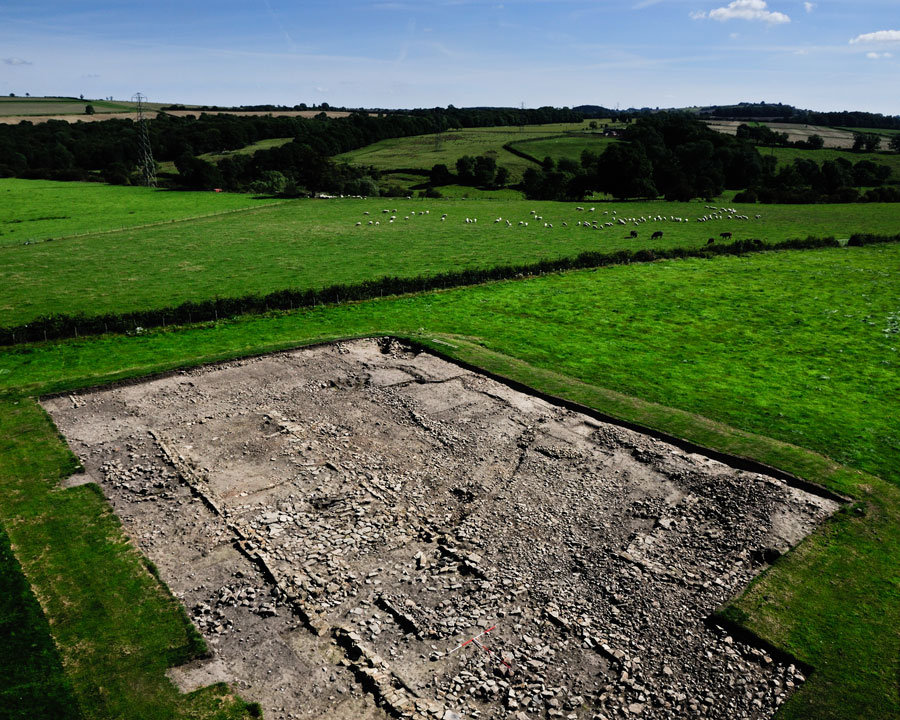
The new excavations of Binchester Roman town in the north of England, running since 2009, are seeking new answers to old questions about the Roman empire and its administration, about the character of military occupation, the life and experiences of locals and the soldiers drawn from the far reaches of the Roman world, about the towns and military outposts built into ancient rural landscapes.
The borders between England and Scotland, the “debatable lands”, were once the northern edge of the Roman Empire. In the second century CE the emperor Hadrian had the frontier marked with a wall some 70 miles long, and the garrisons, totaling up to 15,000 troops, controlled a broad military zone organized around forts and a system of roads. To the west of the Pennine Mountains, a road linked Carlisle (Luguvalium) with Manchester (Mamucium) to the south. Forts along its route were spaced about a day’s ride apart and funneled provisions and traffic to and from the frontier. On the eastern side of the Pennines was Dere Street, which began at the legionary headquarters of Eboracum (York) and ran north through the supply-depot town of Coria (Corbridge), at one time extending well into Scotland. The site of Vinovium or Vinovia lay on Dere Street, about 30 miles south of the Wall, guarding a crossing of the River Wear. Its name means “on the wine road” and suggests an important link with the sort of Roman imports valued along the frontier! Vinovium is now known as “Binchester”, “binns” – cattle mangers (Old English) in the ruined remains of the fort – “ceaster”.
Binchester has always been known as the site of a Roman fort; the remains of the distinctive fortifications are still visible in the fields of pasture, even when landscaped and incorporated into the grounds of the nearby 18th century manor house. Roman finds, including carved altars and especially coins (locals called them “Binchester pennies”), have frequently been found in the area from at least the 16th century.
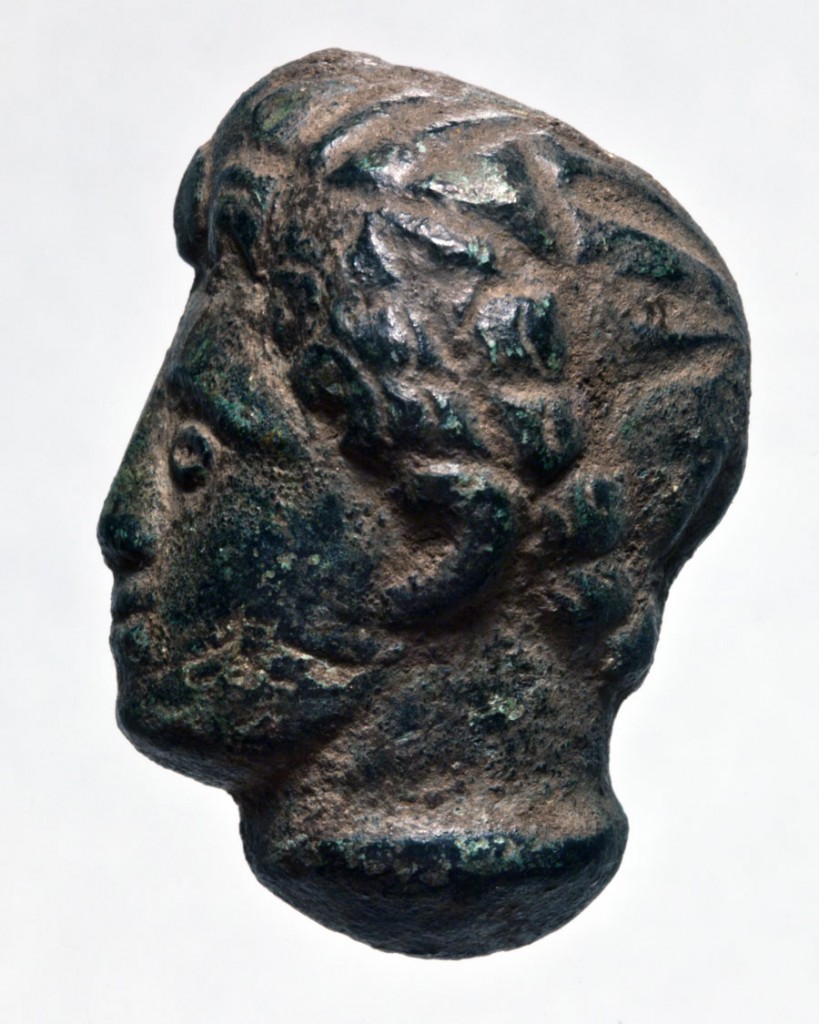
In 1815, a horse drawn cart heading out of the manor’s Home Farm fell into a hole that had opened up by the track. The raised hypocaust floor of the fort’s buried bath suite had collapsed. Instead of filling in the void, the squire built a subterranean brick vault over the Roman remains. Visitors could descend some stairs and see the bath’s impressive heating system, crawling around the brick pillars of the hypocaust floor that had not yet collapsed. Soon afterward, the manor house changed hands and the new owner had little interest in antiquities. The stone altars that had been collected from the fields were repurposed as props to support shaft and tunnels in one of the many local coal mines. In 1836, the Church of England purchased the estate, halting further destruction to the ruins and artifacts. Forty years later, the first small-scale antiquarian excavations were started in order to trace the extent of the fort’s defenses and its adjacent civilian settlement (vicus).
Renewed interest in the 1960s and 1980s brought excavations that uncovered most of the bath suite, one of the most impressive remaining in the northern empire, as well as the adjacent commandant’s house (praetorium). Improved archaeological techniques were able to identify several phases of occupation, although still not much of anything that pre-dated the Romans’ arrival. Probably built originally as part of the famous general Agricola’s march north from York in 79 CE, Binchester seems to have been incorporated into the supply route for Hadrian’s re-worked frontier, then possibly briefly abandoned when Antonius Pius established his Antonine frontier by the 150s up in the land of the Picts. It was back in service by the campaigns of Marcus Aurelius, possibly to police the valuable mines in the area. After the unrest of the third century, Binchester and other forts in Britain underwent a major change in their command structure, visible in the architecture. A long-standing timber praetorium was demolished and replaced with a much grander stone building that resembled a Mediterranean courtyard house with smart opus signinum floors, bathing chambers, and rooms heated from below via a hypocaust. Perhaps Binchester was now the prevue of a regional commander, newly appointed to restore order to an area of Britain that had participated significantly in the chaos of the third century. Over the next fifty years, the elaborate private bath suite (the one found by the horse drawn cart) was also added on to the praetorium as a separate structure: a facility suitable for entertaining quite a house party!
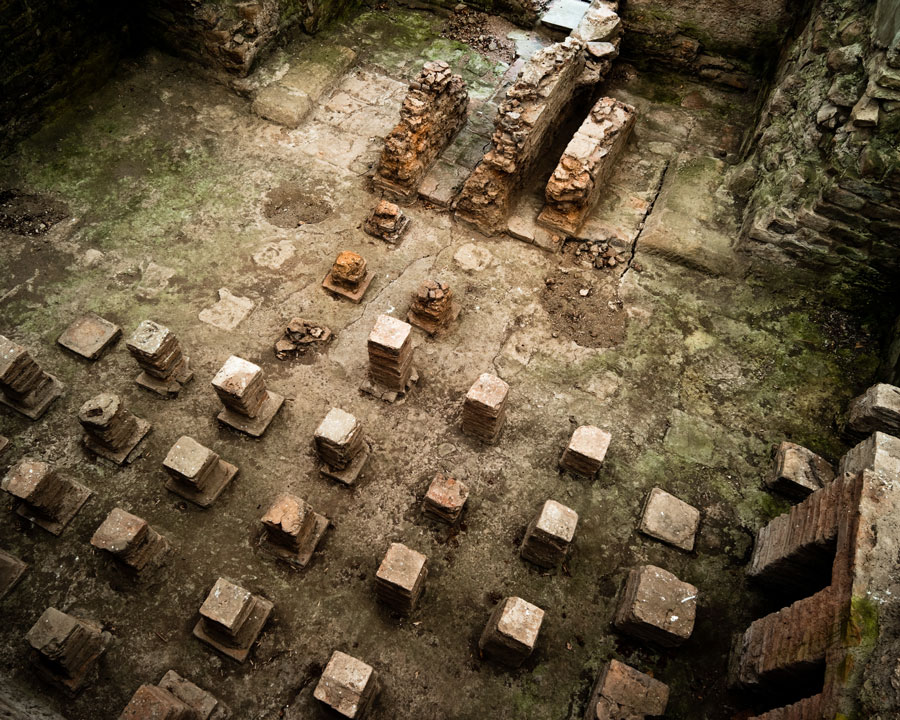
Eventually, as Roman influence in the area began to wane throughout the fourth century, another change in the command structure seems visible in the ruins. The praetorium was divided into smaller apartments, and the bath building was made more public, servicing more than just the commander, his family and guests. Maybe the regional commander, important at the end of the third century, was transferred to a central post elsewhere, and the garrisoned fort split up what had previously been the property of the elite. By the time Roman control of the province unraveled in the early fifth century, Binchester was in a sorry state. Soldiers, abandoned without pay, became local petty warlords or were absorbed into neighboring communities trying to resist attacks from Saxon pirates and other enemies. The once grand rooms of the praetorium were turned over to blacksmithing and the butchery of cattle. The bath building’s pipes and hypocaust system were hopelessly clogged with ash and garbage, and part of the walls had collapsed. By the sixth century, occupation of the central portions of the military site had all but come to an end, evidenced by the burial of a young Saxon woman inside the rubble of the collapsed furnace room of the baths.
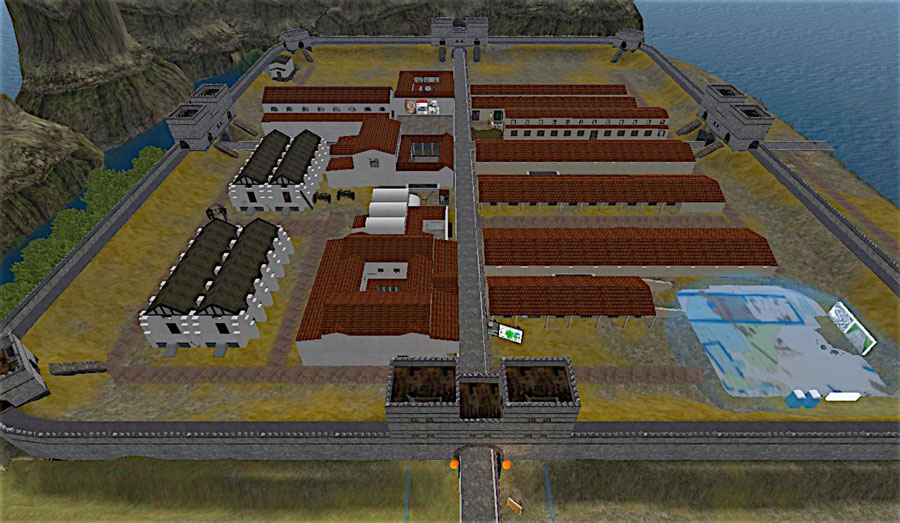
Although this rough sequence of events is informed by the excavation of the praetorium and baths building, details are in short supply at Binchester. The site, a prominent hill and terrace controlling an important crossing the River Wear, suggests there should be some Iron Age or earlier occupation, but excavations have been too small in scope or have not been able to go deep enough to discover any trace of pre-Roman activity. The late third and fourth century praetorium and bath building are well studied, but they represent only two of the many buildings that would have serviced a substantial garrison for over four centuries. Apart from some antiquarian trenching, the extensive vicus, the town outside the fort, has been ignored, although some finds show that it may have been occupied well past the fifth century. Televised excavations in 2007 by the Time Team (Channel 4 UK) even found tantalizing glimpses of a monumental cemetery at the edge of the vicus – a street of mausolea. In order to uncover more of the site, to seek answers about the entire area over a long duration, and to plug all findings into a larger regional survey, a team of archaeologists from Stanford University in the US and Durham University in the UK joined forces with the support of the local Durham County Council. The project is run from Stanford by Melissa Chatfield, Gary Devore, David Platt, and Michael Shanks, and from Durham by Peter Carne, Richard Hingley, David Mason, and David Petts.
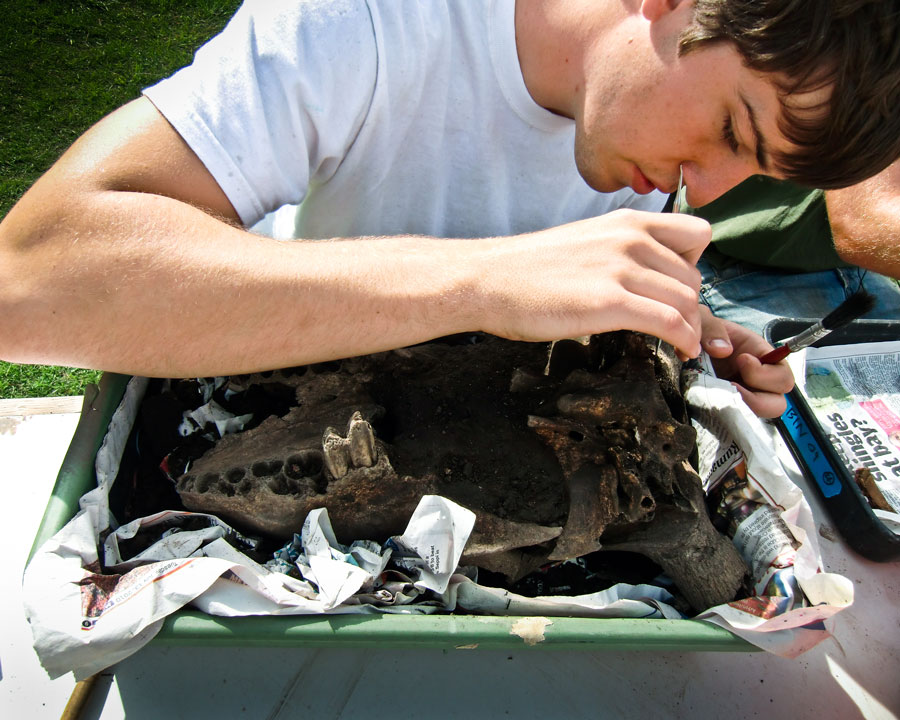
July 2010 was the first full archaeological field season for this Binchester Project. Two main trenches were opened, one inside the fort and one outside, in order to coordinate findings and explore any distinctions between military and civilian on this northern frontier. In the fort, the trench occupies the north-eastern corner immediately inside the defenses where geophysical survey suggested at least one barracks building and various intramural defensive towers. Immediately under the topsoil, the team found great spreads of cobble stones, puzzling rubble-filled depressions, a substantial drain, areas where the defensive rampart of the fort had been remodeled, and spreads of cattle bones everywhere. Painstaking, detailed work on the remains has revealed that in the post Roman period this area of the fort was taken up by a busy abattoir. The workers, be they native Britons, disenfranchised former soldiers, or a mix of the two, had taken over the crumbling remains of a stone barracks block. The building was subdivided and Roman building stone was used to construct a smaller utilitarian building set into the ramparts. (Reused stone was also taken across the river in the 630s to build the still-standing Saxon church at Escomb.) A few wooden pens held groups of cattle until they were led into the former barracks to be slaughtered. This was the source of the plentiful cattle bone uncovered by our excavators. Its discovery has given us the opportunity to pay careful attention to a phase that often gets disregarded on Roman fort sites: the transitional early Medieval period. Life in Britain after the Romans left was substantially different to what had come before. The loss of Roman goods means that today there is much less to find archaeologically from that period. Most buildings would have been of timber, which is harder to identify and understand than stone. Dating is also difficult because Roman coins, a chief tool of dating, stopped being imported. The story now emerging is not a simple one of abandonment brought on by the collapse of imperial authority and the apparatus of the state. In fact, it seems that there was a deliberate attempt to try and keep Binchester going as a settlement after it stopped being garrisoned, perhaps even by former soldiers that had once been employed by Rome.
For most of its history, Binchester seems to have been as much a town as a military outpost. Geophysical survey, using ground penetrating radar and other techniques to see beneath the surface, has already revealed the extent and density of building far beyond the fort. To investigate this, the team opened a second trench this year in the vicus, the civilian settlement, just where the main road, Dere Street, left the fort and headed off south to Eboracum. In the latest, uppermost layers we have found substantial stone buildings fronting that road, as well as more cow bones. As we analyze the material, they will eventually be able to investigate the differences in the standard of living between the military and civilian sectors of Binchester.
There are some evocative hints of later phases of English history. The main road running through the vicus was resurfaced perhaps after the end of Roman rule. It would certainly have still been a main thoroughfare in the sixth century and later. This was the route taken in about 600 by the army of the Gododdin, a British people of the Hen Ogledd or “Old North”, on their way to face the army of the invader Angles from northern Germany. The two forces met at the stronghold of Catraeth, modern day Catterick in North Yorkshire, just to the south of Binchester. According to the ancient Welsh poet Aneirin, the British Gododdin were massacred to a man.
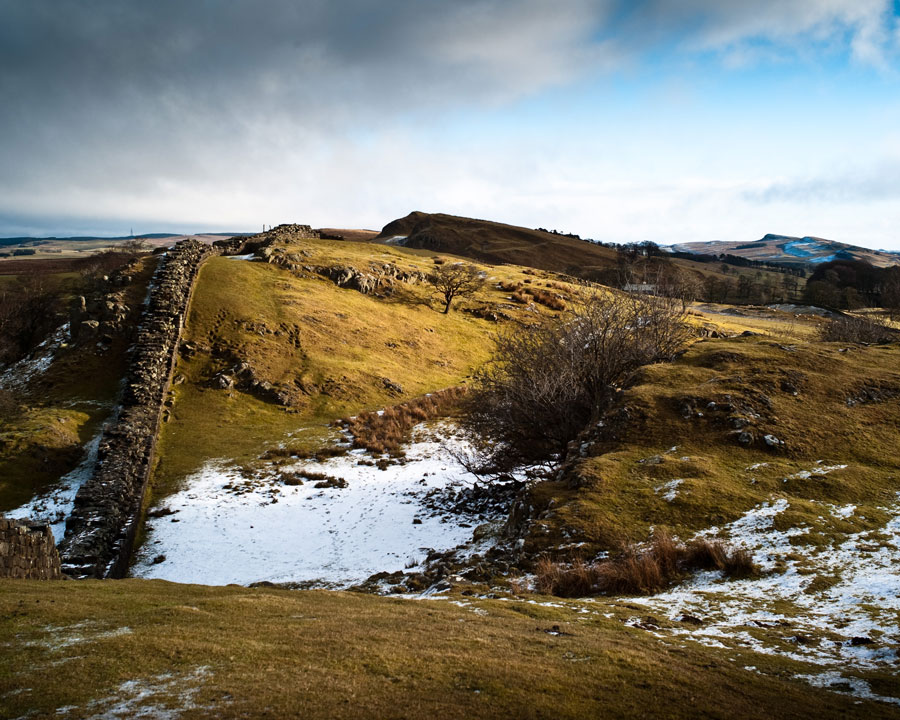
Archaeological sites such as Binchester fascinate with the intellectual puzzles they pose, and this attracts a large and diverse community of students, scholars, specialists, and enthusiasts. This past summer, nearly 400 people were involved in different ways with the project. As well as students, most of whom spent four weeks on site, there were shorter term visits from neighboring communities, including elementary school parties and local history society members. A class run by Stanford Continuing Studies, 28 strong, came over for a week of touring the region and working on site. A group of students from a Palo Alto high school came over as well. In another kind of experiment we have even begun the digital rebuilding and reconstruction of Vinovium inside the online world Second Life (http://rebuiltromans.blogspot.com/).
The Binchester project will be excavating the site for at least another four seasons, continuing to unite international scholars and students, and to give them an opportunity to excavate in a rich historical landscape. Follow the story on our web site at http://vinovium.org; photo galleries can be found at http://archaeographer.com.